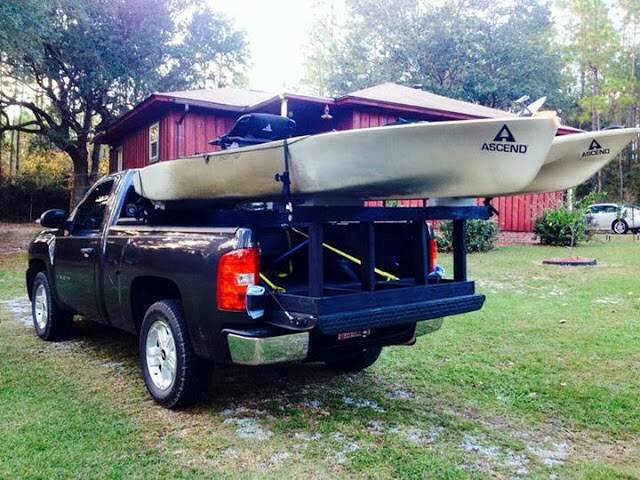Transporting a canoe requires careful planning and the right equipment to ensure both the canoe and your vehicle remain safe throughout the journey. Whether you’re planning a short trip to a local lake or a long expedition to a remote river, knowing how to transport a canoe properly is crucial.
This guide covers everything you need to know about how to transport a canoe, with a focus on using a truck for the task.
Types of Canoes
Understanding the different types of canoes is essential for choosing the right transportation method:
Recreational Canoes
Recreational canoes are designed for casual paddling on calm waters. They are typically shorter and wider, offering stability and ease of use. However, their bulkier size can make transportation more challenging, requiring careful securing and padding.
Touring Canoes
Touring canoes are longer and narrower, built for longer trips on open water. Their streamlined shape enhances speed and efficiency but can make them more challenging to secure properly. Proper padding and tie-down methods are crucial to avoid damage.
Whitewater Canoes
Whitewater canoes are designed for navigating rapids and rough waters. They are shorter and more maneuverable, with reinforced structures to withstand impacts. Their compact size often makes them easier to transport, but securing them firmly is still essential.
Fishing Canoes
Fishing canoes come with specialized features like rod holders, storage compartments, and mounts for accessories. These additions make them slightly heavier and bulkier, requiring extra care to protect these features during transportation.
Choosing the Right Truck
Selecting the right truck for transporting your canoe is the first step towards a successful trip:
Assessing Truck Bed Length
Measure the length of your truck bed to ensure it can accommodate your canoe. For longer canoes, a truck with a longer bed or a bed extender might be necessary. A longer bed provides more support and stability, reducing the risk of the canoe shifting during transit.
Considering Truck Bed Width
The width of the truck bed should be sufficient to fit the canoe comfortably. If the bed is too narrow, the canoe might not sit properly, leading to instability. Measure the widest part of your canoe and compare it with the truck bed width.
Evaluating Truck Bed Depth
The depth of the truck bed affects how high the canoe sits when placed inside. A deeper bed can offer more support but may require lifting the canoe higher, which can be challenging. Ensure the depth is manageable for loading and unloading the canoe.
Essential Equipment
1. Racks and Carriers
- Overhead Racks
Overhead racks are mounted on the roof of the truck and provide a stable platform for carrying the canoe. These racks typically include crossbars and specialized cradles to hold the canoe in place. They are ideal for trucks with shorter beds or for carrying multiple canoes.
- Truck Bed Extenders
Truck bed extenders are attached to the truck’s hitch, extending the length of the bed. They provide additional support for longer canoes, preventing excessive overhang. Bed extenders often come with adjustable height settings to match the canoe’s size.
- Side-Mount Racks
Side-mount racks are installed on the sides of the truck bed, allowing the canoe to be carried alongside the vehicle. These racks are adjustable and can accommodate different canoe sizes. They are particularly useful for freeing up the truck bed for other gear.
2. Tie-Down Straps
- Types of Straps
Ratchet straps and cam buckle straps are the most commonly used for securing canoes. Ratchet straps offer a tighter hold, while cam buckle straps are easier to adjust and release. Choose straps with high weight capacity and durability.
- Choosing the Right Strap
Select straps that are long enough to wrap around the canoe and truck bed or rack securely. The straps should be made of high-quality materials to withstand the tension and stress of transportation. Look for straps with padded buckles to avoid scratching the canoe.
3. Padding and Protection
- Foam Blocks
Foam blocks provide cushioning between the canoe and the truck, preventing scratches and dents. They are placed at contact points and help distribute the weight evenly. Foam blocks are essential for protecting both the canoe and the truck.
- Rubber Padding
Rubber padding offers additional grip and protection, especially useful for securing the canoe on racks or extenders. It prevents the canoe from slipping and absorbs vibrations during transit. Rubber padding is particularly effective in reducing wear on the canoe.
Step-by-Step Guide: Preparing The Canoe For Transport
Step 1: Prepare the Truck Bed
- Clear the Truck Bed: Remove any loose items, tools, or debris from the truck bed to ensure a clean and stable surface for loading the canoe.
- Position Foam Blocks or Canoe Brackets: Place foam blocks or canoe brackets in the truck bed to create a stable platform. These blocks or brackets should be designed specifically for canoe transport and should be positioned at a distance that corresponds to the canoe’s hull shape.
- Adjust the Blocks or Brackets: Adjust the blocks or brackets to ensure they are level and evenly spaced, providing a secure and balanced base for the canoe.
- Secure the Blocks or Brackets: Use rope or straps to secure the blocks or brackets to the truck bed, preventing them from shifting during transport.
Step 2: Load the Canoe
- Lift the Canoe: Lift the canoe together with your partner, using your legs for power rather than straining your back. This will help prevent injury and ensure a smooth loading process.
- Position the Canoe: Slowly place the canoe onto the foam blocks or brackets, with a gentle touch to prevent sudden impacts. Ensure the canoe is centered within the truck bed, achieving perfect harmony with your vehicle.
- Adjust the Canoe: Adjust the canoe’s position as needed to ensure it is evenly balanced and securely positioned on the blocks or brackets.
Step 3: Secure the Canoe
- Use Ratchet Straps or Tie-Downs: Use ratchet straps or tie-downs to create a web of security around the canoe. These straps should be designed specifically for canoe transport and should be long enough to wrap around the canoe’s hull.
- Fasten the Straps: Fasten the straps to the truck’s tie-down points or bed hooks, ensuring a strong connection. Make sure the straps are tightened evenly on both sides to prevent the canoe from shifting during transport.
- Loop the Straps: Loop the straps around the canoe’s gunwales or thwarts, creating a snug embrace that prevents shifting. Ensure the straps are not too tight, as this can cause damage to the canoe’s hull.
- Tighten the Straps: Tighten the straps evenly on both sides, like tuning the strings of a musical instrument, for stability. Check the straps periodically during transport to ensure they remain secure.
Step 4: Check Stability
- Visual Inspection: Perform a visual inspection of the canoe and truck to ensure everything is securely in place.
- Check the Straps: Double-check all straps and connections to ensure they are secure and will not come loose during transport.
- Drive Carefully: Drive carefully and avoid sudden movements to prevent damage to the canoe or vehicle. Avoid sudden braking, sharp turns, or rapid acceleration.
- Monitor the Canoe: Monitor the canoe during transport to ensure it remains securely in place. If you notice any signs of shifting or movement, adjust the straps as needed to maintain stability.
Step 5: Unload the Canoe
- Position the Truck: Position the truck in a safe and accessible location, ensuring the canoe can be unloaded easily and safely.
- Release the Straps: Release the straps and carefully lift the canoe off the foam blocks or brackets.
- Position the Canoe: Position the canoe on a stable surface, such as a dock or a flat area, to prevent damage or injury.
- Secure the Canoe: Secure the canoe to the surface using ropes or straps to prevent it from shifting or falling over.
Safety Guidelines
Ensure clear visibility by confirming that the canoe does not obstruct your view of the road or mirrors. Consider using additional mirrors if necessary to maintain visibility. Additionally, pay attention to weight distribution. Distribute the weight of the canoe evenly to prevent it from affecting the truck’s handling and stability. Ensure the canoe is centered and balanced on the truck to minimize the risk of tipping or shifting during transport. These measures contribute to a safer and more secure transportation experience.


